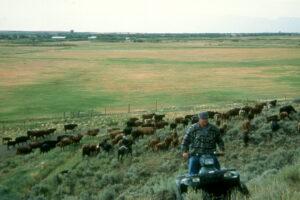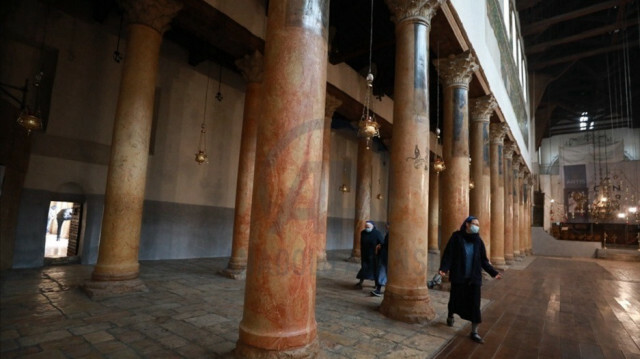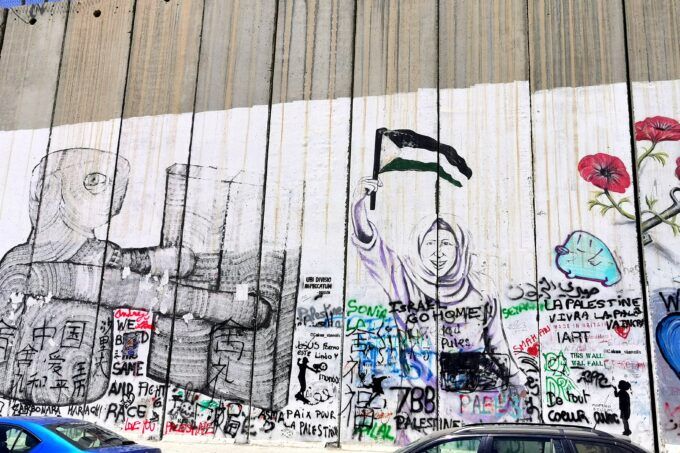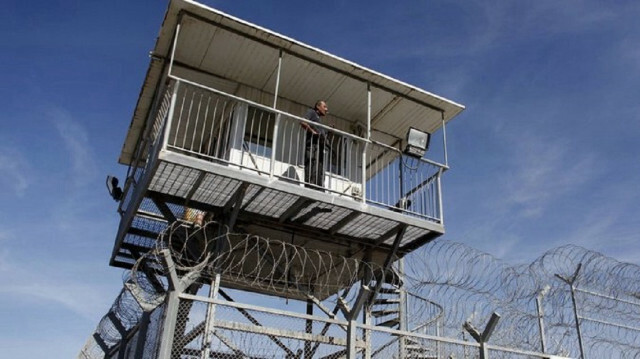The Key Impacts of Livestock Production Upon the Land

Livestock impacts is more than grazing of plants, Livestock production can socially displace native wildlife, causes water pollution, destroys soil crusts, is the reason predators like wolves are being killed, spread weeds like cheatgrass that fuels wildfires and many other impacts. Photo George Wuerthner.
Livestock is responsible for more ecological damage to the western landscape than any other human activity. However, few accounting of these impacts is ever compiled. One source is my book Welfare Ranching–the Subsidized Destruction of the West.
Remember that all ecological science is based on statistical averages, not absolutes. Therefore, not all livestock operations have the following impacts, which will vary from operation to operation, region to region.
Nevertheless, most livestock operations statistically have at least some of the following ecological impacts on the landscape.
1. Forage competition. Most forage on public lands is consumed by livestock, leaving little residual cover or food for native wildlife.
2. Livestock compact and trample soils reduce infiltration, creating higher run-off, flooding, and erosion.
3. Livestock is the West’s primary source of non-point water pollution non-point water pollution in the West.
4. Livestock destroys soil crusts that bind the soil and capture free nitrogen, making it available for plant growth. Soil crust also inhibits weed establishment.
5. Livestock are among the chief sources of weed dispersal. Also, the trampling of plants and cropping of desirable plants gives weedy species a competitive advantage.
6. Most of the West’s water is diverted for livestock forage production (i.e., hay). In Montana, for instance, 97% of all water is used by agriculture—chiefly to produce hay and alfalfa.
7. Livestock can socially displace native species like elk, deer, antelope, and other species that have been shown to avoid areas actively being grazed by domestic animals.
8. Livestock transmits disease to native species, i.e., bighorn sheep.
9. Predator and “pests” control, such as killing wolves and prairie dogs, significantly reduces the ecological integrity of the landscape.
10. Trampling of riparian areas negatively affects 75-80% of the West’s species that are riparian dependent.
11. Plant community conversion—grazing can lead to the eventual transformation of a place community—for instance, many areas are dominated by cheatgrass.
12. Livestock grazing contributes to increased fire severity because of the spread of the highly flammable cheatgrass.
13. Livestock grazing can interrupt nutrient cycles.
14. Livestock degrades the esthetics of the landscape—for instance, cow manure in many recreation areas like campgrounds.
15. Forage production on and off public lands destroys native plant communities. More than 80% of all US cropland, or approximately 300 million acres (three times the acreage of California), is devoted to livestock forage (corn, soy, hay) production, which has eliminated the natural communities.
16. Livestock affects many smaller native species that are seldom on the radar screen of most citizens, from snails to frogs to grasshoppers.
17. Livestock production is responsible for more Endangered Species than any other land use in the West.
18. Fences, water developments, and other structures used to maintain livestock operations negatively impact native species. I.e., fences block wildlife migrations, and fence posts may provide perches for birds of pretty to attack sage grouse. In addition, water developments used by livestock act as predator pits, attracting wildlife to water with little hiding cover making prey species vulnerable to predators.
19. Getting to the actual costs of livestock production is nearly impossible. The accurate price is uncountable. Even the public taxpayer subsidies are obscured by false and tricky accounting. If you fence a campground to keep cows out, it comes from the recreation budget, not the livestock budget. If you fence a spring to protect the water source, the cost is usually charged to the wildlife accounts.
20. Livestock is one of the major contributors to GHG emissions globally.
21. Public lands provide less than 4% of the forage consumed by livestock in the country yet have an overwhelmingly negative impact on the West’s ecological integrity. Eliminating livestock grazing is the most effective way to restore and heal the land.



